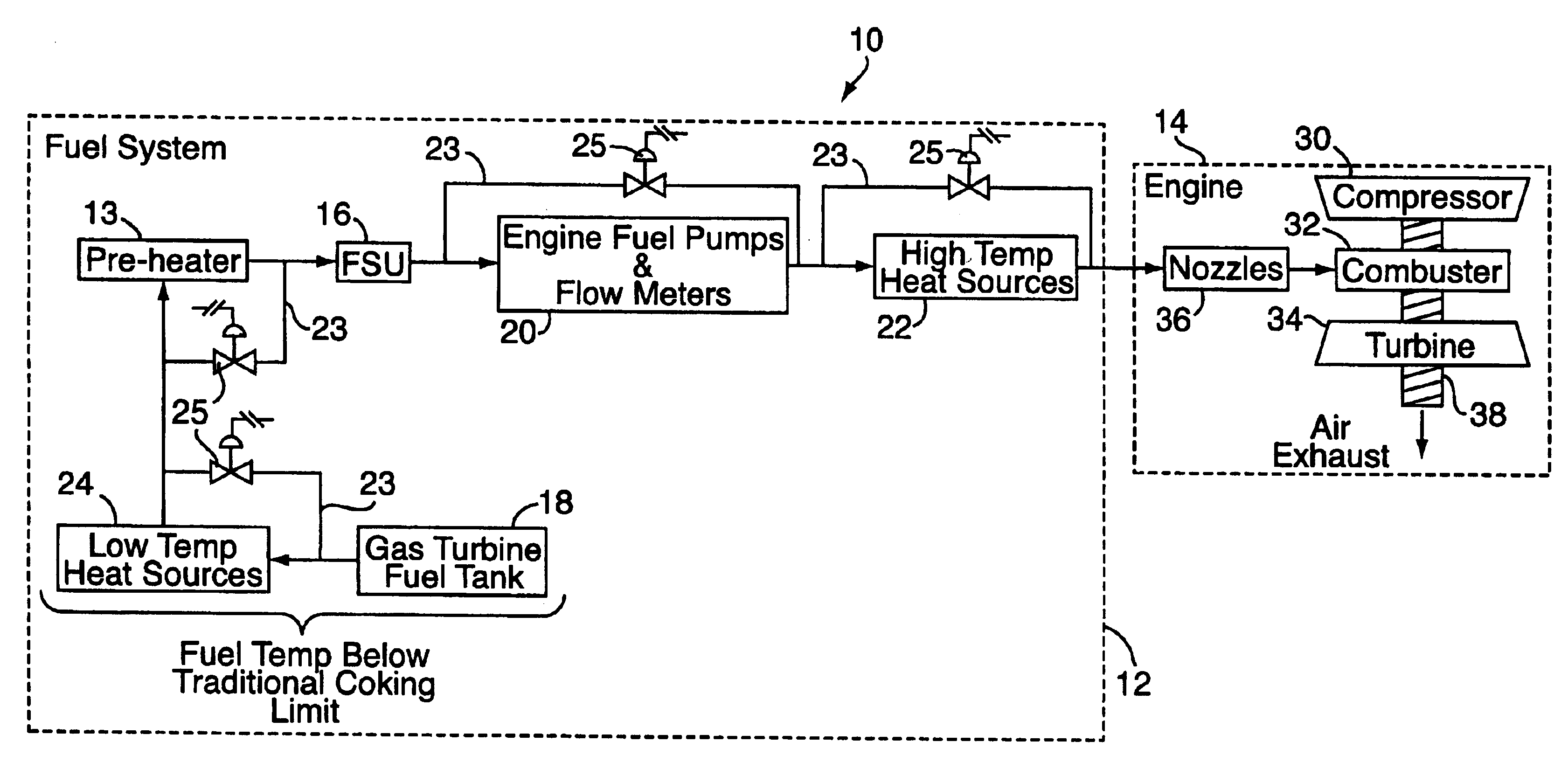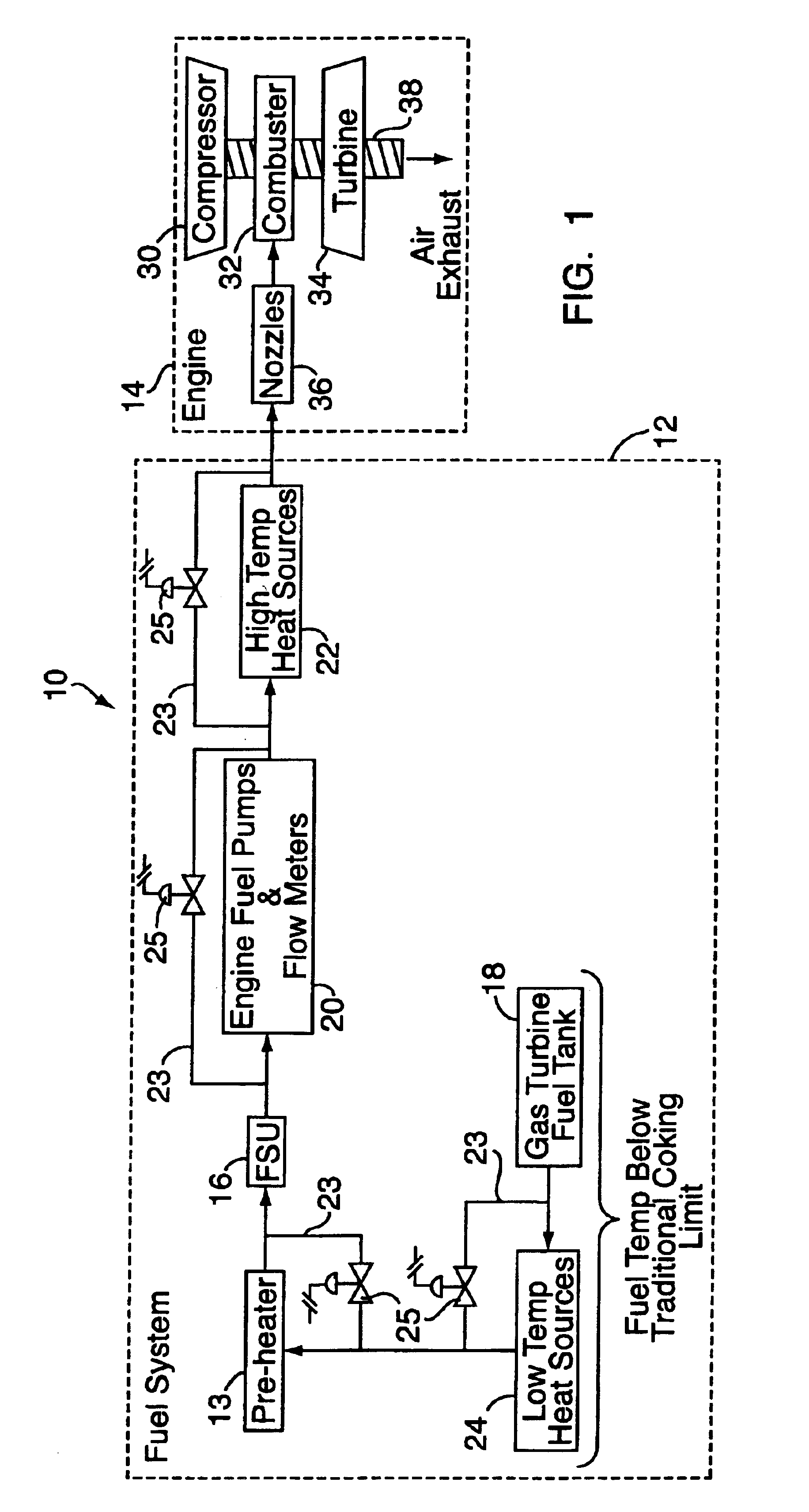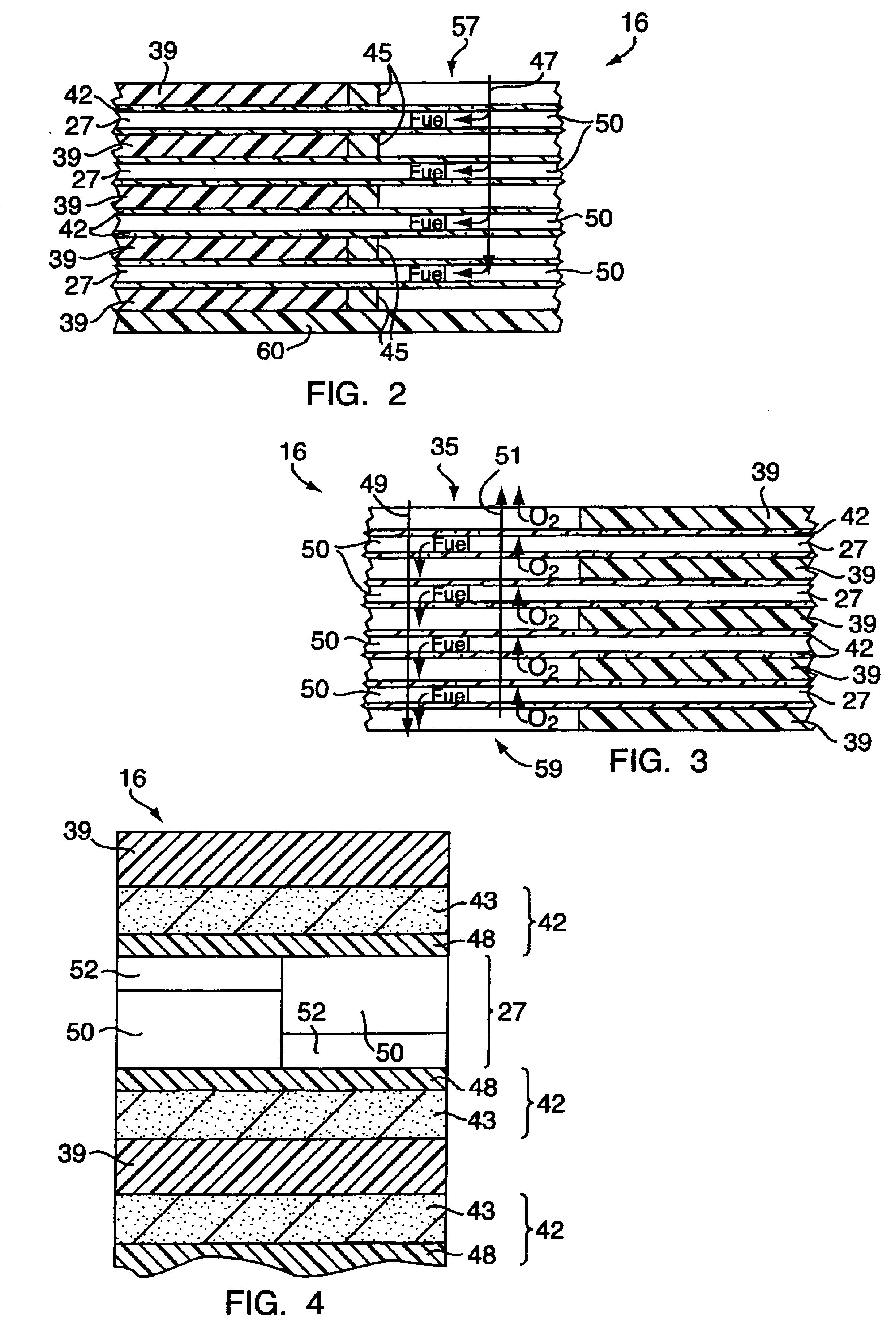System and method for thermal management
a technology of thermal management and system, applied in the direction of liquid degasification, turbine/propulsion fuel heating, separation processes, etc., can solve the problems of significant performance penalties, usable cooling capacity of a particular fuel, rate of formation of undesirable oxidative reaction products and their deposit on the surface, etc., to reduce fuel consumption costs, and increase the exploitable cooling capacity
- Summary
- Abstract
- Description
- Claims
- Application Information
AI Technical Summary
Benefits of technology
Problems solved by technology
Method used
Image
Examples
Embodiment Construction
[0026]Referring to FIG. 1, a system for the management of heat transfer is shown generally at 10 and is hereinafter referred to as “system 10.” As used herein, the term “management of heat transfer” is intended to indicate the control of heat transfer by regulation of various chemical- and physical parameters of associated sub-systems and work cycles. The sub-systems include, but are not limited to, fuel systems that provide a hydrocarbon-based fuel to the work cycle. The work cycle may be an energy conversion device. Although the system 10 is hereinafter described as being a component of an aircraft, it should be understood that the system 10 has relevance to other applications, e.g., utility power generation, land-based transport systems, marine- and fresh-water based transport systems, industrial equipment systems, and the like. Furthermore, it should be understood that the term “aircraft” includes all types of winged aircraft, rotorcraft, winged- and rotor hybrids, spacecraft, d...
PUM
| Property | Measurement | Unit |
|---|---|---|
| Temperature | aaaaa | aaaaa |
| Partial pressure | aaaaa | aaaaa |
| Flow rate | aaaaa | aaaaa |
Abstract
Description
Claims
Application Information
 Login to View More
Login to View More - R&D
- Intellectual Property
- Life Sciences
- Materials
- Tech Scout
- Unparalleled Data Quality
- Higher Quality Content
- 60% Fewer Hallucinations
Browse by: Latest US Patents, China's latest patents, Technical Efficacy Thesaurus, Application Domain, Technology Topic, Popular Technical Reports.
© 2025 PatSnap. All rights reserved.Legal|Privacy policy|Modern Slavery Act Transparency Statement|Sitemap|About US| Contact US: help@patsnap.com



